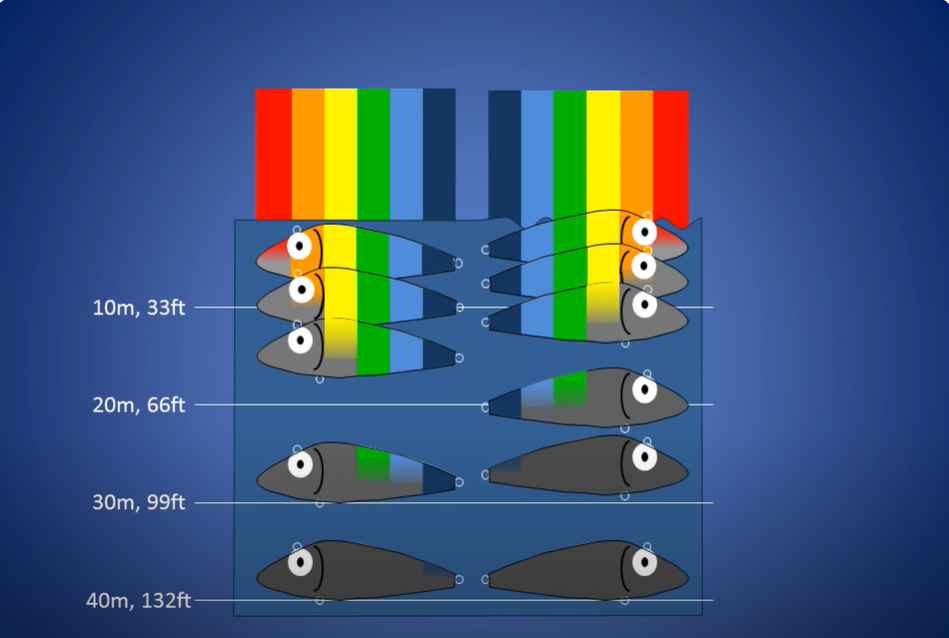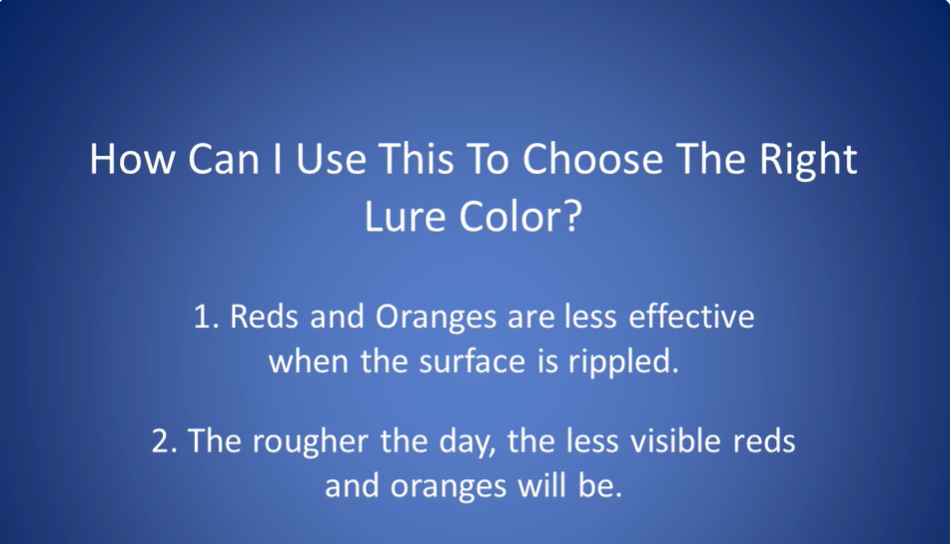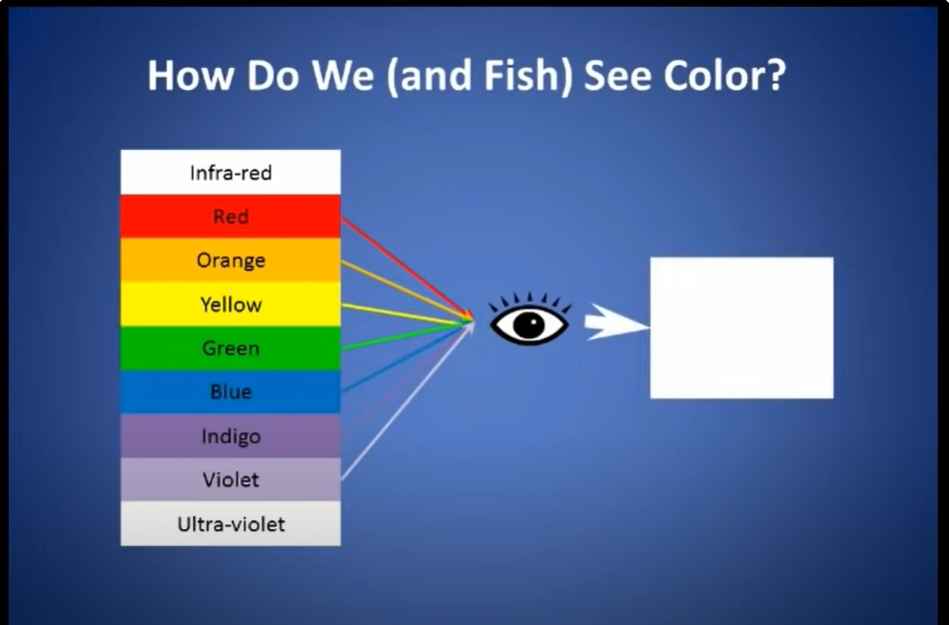Boat color can affect fishing success, but its impact varies. Water conditions and fish psychology influence this effect.
Choosing the right boat color for your fishing adventures may appear trivial, but savvy anglers know it can be a critical aspect of their strategy. The color of a boat can influence its visibility both above and below the water, potentially affecting fish behavior.
Does Boat Color Affect Fishing? While some argue that fish are more responsive to specific colors, the prevailing belief is that it’s not just about the color but how it contrasts with the environment. Subtle hues may blend in with the water, making your approach less startling to the fish. Contrasting and bright colors might be advantageous in certain conditions, luring curious fish closer. As we examine this topic, it’s essential to consider the myriad of factors including water clarity, depth, and the type of fish targeted, as they can all play a pivotal role in whether or not boat color makes a significant difference.

Understanding The Impact Of Boat Color On Fish Behavior
In the world of fishing, the significance of boat color cannot be overstated. Understanding the impact of boat color on fish behavior is a crucial aspect for anglers seeking success. Fish, renowned for their sensitivity to visual stimuli, respond differently to different hues in their environment.
Ever wondered, how does color affect fish? The answer lies in their acute perception of their surroundings. Certain colors can either attract or repel fish, influencing their feeding and mating behaviors. Anglers often ponder, what color is most attractive to fish? Research suggests that it varies across species, but generally, natural and subdued tones tend to be more appealing.
Observations of fish changing colors raise questions like, what does it mean when your fish changes colors? Understanding this phenomenon involves recognizing the dynamic nature of fish communication, where changing colors and patterns serve as signals for different social and environmental factors.
A successful fishing expedition, it’s imperative to dig into the intricate details of understanding the impact of boat color on fish behavior.
The Influential Factors On Fish Perception
| Aspect | Impact on Underwater Visibility |
|---|---|
| Water Clarity | Sediments and algal blooms can alter transparency. |
| Depth | Light penetration decreases with depth, affecting color. |
| Light Conditions | Bright sunlight or overcast conditions can alter colors. |
Boat color may play a role in either attracting or repelling fish, considering these factors and the species-specific vision of fish.
Scientific Studies On Fish Reaction To Boat Color
- How fish distinguish between different colors.
- The possible associations fish make with certain colored objects.
- The preferences or aversions fish might have towards specific colors.
Evidence gathered from these studies contributes to a better understanding of how color may affect an angler’s success.
The Role Of Visibility In Fish Response To Boat Color
- Alert fish of the boat’s presence, leading to avoidance behaviors.
- Stimulate curiosity, drawing fish closer in certain situations.

Analyzing The Influence Of Boat Color On Fishing Success
In the world of angling, the color of your fishing boat might hold more significance than meets the eye. Analyzing the influence of boat color on fishing success unveils a nuanced aspect of the angler’s arsenal. Many enthusiasts wonder, what does the fishing boat symbolize, and how its color impact the catch?
The best color to paint the bottom of your boat isn’t a mere aesthetic choice; it’s a strategic decision that can affect your fishing outcomes. Through meticulous analysis of boat color and its connection to fishing success, anglers can fine-tune their approach. So, let’s dig into the subtle yet crucial details of how the color of your boat may influence your fishing endeavors, seeking insights from experts in the field.
Behavioral Patterns Of Fish About Boat Color
- Camouflage: How some boat colors mimic natural surroundings.
- Visibility: The distance at which fish can detect colors above water.
- Color spectrum underwater: How different wavelengths behave and how fish perceive them.
Knowing these aspects helps us select boat colors that could potentially improve the stealth aspect of fishing.
The Complementary Effect Of Boat Color On Water Clarity
Water clarity ranges from the crystal-clear blues of tropical seas to the murky browns of some inland waters. The right boat color can harmonize with these conditions. Let’s examine:
| Water Clarity | Boat Color Recommendation |
|---|---|
| Clear Blue Waters | Lighter, Sky-Reflective Hues |
| Murky, Silt-Rich Waters | Darker, Green or Brown Tones |
Anecdotal Evidence And Fisherman Insight On Boat Color
Seasoned anglers often have tales to tell about what works and what doesn’t on the water. Gathering insights can provide valuable clues into:
- The impact of bright or unconventional boat colors on fish behavior.
- Personal experiences with different boat colors in differing fishing environments.
- Preferred boat colors for specific species and fishing techniques.
Practical Considerations For Choosing The Right Boat Color

Selecting the ideal hue for your boat is more than just aesthetic appeal; it can influence your fishing success. Darker shades may absorb more heat and potentially affect fish behavior, so consider the impact of color on your aquatic pursuits before making a final decision.
Considering Water Conditions And Fish Species
- Clear water: Opt for colors that match the sky or the sea.
- Turbid water: Darker colors could be less noticeable.
- Freshwater: Earth tones like brown or green can be effective.
Matching your boat color to the fishing environment doesn’t just consider the water itself, but also the species behavior. Predatory fish might be less spooked by a color that aligns with their habitat, increasing your chances of a successful catch.
Evaluating The Impact Of Light And Time Of Day
| Time of Day | Light Quality | Suggested Boat Color |
|---|---|---|
| Morning/Evening | Diffuse Light | Non-reflective, muted colors |
| Midday | Bright Light | Matte finishes over bright colors |
Tips For Maximizing Fishing Success Through Boat Color Selection
| Information | Tips |
|---|---|
| Analyze common waters for camouflage color scheme | Assess the waters you fish in to determine an effective color for hiding. |
| Consider behavior and vision of target species | Some fish may be sensitive to specific colors; adapt your scheme accordingly. |
| Choose matte over glossy to reduce glare and shine | Opt for matte finishes to minimize glare, enhancing your chances of success. |
| Test different colors to observe fish reactions | Experiment with different boat colors to gain insights into fish preferences. |
| Consider behavior and vision of the target species | Adapt color choices based on fishing goals—stealth or visibility as needed. |
Ultimately, the right boat color complements your fishing strategy, improves your approach, and might just be the detail that tilts the odds in your favor.

Frequently Asked Questions On Does Boat Color Affect Fishing
What Colors To Avoid When Fishing?
Avoid bright colors like whites and yellows when fishing as they can be easily seen by fish. Opt for natural, subdued tones that blend with the environment.
Does Color Matter To Fish?
Yes, color matters to fish as they can perceive different hues, which influences their behavior toward mating, feeding, and habitat selection.
What Is The Best Color For A Boat?
The best color for a boat often depends on its use. White reflects the sun’s heat and is visible, which is ideal for leisure crafts. Darker hues conceal scratches but can get hotter, suited for cooler climates. Bright colors are excellent for safety and visibility in the water.
Do Fish Care About Line Color?
Fish can be sensitive to line color, as it may affect their visibility and spook them. Choose a line color that blends with the fishing environment for better results.
Conclusion
Summing up, the color of your boat can have an impact on fishing success. While not the sole factor, it plays a role in being stealthy and attracting fish. Remember to consider your environment and target species when choosing. Keep it simple, stay informed, and happy fishing!

